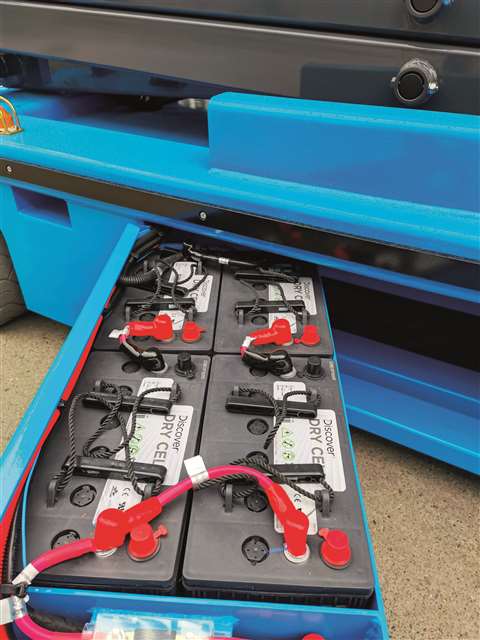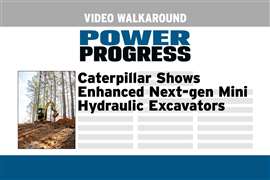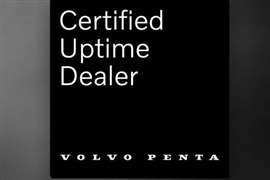Electric charge: Which batteries will power the access industry in future?
24 June 2022
Advances in battery technology and the need to cut carbon emissions are driving an arms race to develop and acquire innovative electricity storage solutions in the access industry. Lucy Barnard finds out how.
Competition to produce increasingly powerful low-maintenance electric equipment is forcing OEMs around the world into an arms race to develop and acquire innovative electricity storage solutions.
According to McKinsey, the global market for battery cells is set to grow on average by more than 20% per year until 2030, reaching at least US$360bn globally.
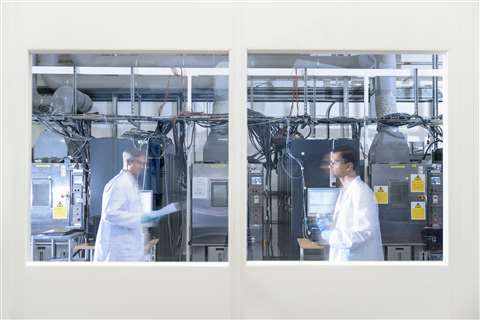 Scientists in lithium ion battery test facility in battery research facility. Photo: Adobe Stock
Scientists in lithium ion battery test facility in battery research facility. Photo: Adobe Stock
Moreover, it says that there is a realistic scenario that the market could accelerate and hit $410bn by 2030 as governments around the world work to eliminate vehicle emissions by promoting the use of electric cars and to help power the world’s electric grids, because renewable sources, such as solar and wind energy, still cannot provide energy 24 hours a day.
Powered access manufacturers, which have already been making battery powered scissor lifts and boom lifts for decades, have been pushing the boundaries of portable power storage.
Last year Oshkosh, the parent company of access platform manufacturer JLG agreed to invest $25m buying shares in Houston-based battery manufacturer Microvast and entered into a joint development agreement to facilitate future battery collaboration and innovation.
And since 2014, French arial work platform manufacturer Haulotte’s innovation department has been working with CEA Tech, part of the French Alternative Energies and Atomic Energy Commission, dedicated to technological research, looking to develop innovative power supply and electrical distribution systems.
For the access industry, the switch to emissions-free equipment comes as a simpler proposition than for other areas of the construction sector because many of the smaller pieces of equipment, such as slab scissor lifts, are already powered by rechargeable batteries while developments in battery technology increase the possibility of switching from diesel to electric for larger machines such as rough terrain vehicles.
Nonetheless, the pressure to innovate is intense, driven both by the need to cut carbon emissions and by fast paced advances in battery technology in other areas.
For access equipment manufacturers, who sell many of their new products to rental companies, the need to provide batteries which can work well in tough site conditions and with minimum maintenance is paramount.
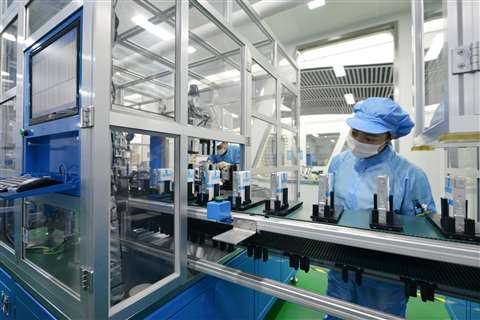 Workers at a lithium-ion factory in Huzhou, China. Photo: Reuters.
Workers at a lithium-ion factory in Huzhou, China. Photo: Reuters.
“The access industry presents battery manufacturers huge challenges in terms of charging technology,” says Micha Denys, export sales manager for Belgium-based Battery Supplies which supplies both lithium ion and lead acid batteries from various manufacturers across Europe.
“Chargers on access equipment often don’t have enough output to fully charge the batteries within eight hours. Equipment is often used through rental services and the end users do not always receive enough knowledge of battery maintenance in terms of charging time, charging conditions and watering services. Batteries are often partially charged which has a negative effect on the battery bank’s performance and may lead to an early fall-out.”
Much recent development has so far focused on lithium batteries as a future power source in the access industry.
“We are finding that our lithium battery sales improve every quarter as we receive more and more requests from OEMs,” says Denys.
“Over the last two years, we have started to sell lithium batteries to a number of European manufacturers of access equipment. These are mainly custom-made battery packs that have been developed together with the engineers of the equipment manufacturers.”
Lithium sales ‘improve every quarter’
Stuart James, joint managing director at the UK arm of European battery distributor DC Battery Technologies says his firm will be specifically targeting the access industry for new Li products this year. “At the moment we supply very few Li batteries to the global access industry,” he says. “But we expect this to change. We will be launching new products aimed specifically at this sector.”
The most widely used form of lithium batteries are lithium-ion rechargeable batteries. Usually consisting of cathodes of either lithium manganese oxide or lithium cobalt dioxide and anodes of graphite, it is this sort of batteries which are already widely used in laptops and smartphones, and which are also the key energy source behind electric vehicles.
“This is a new segment for us,” says Dave Schulenberg, director of product management electrification and li-ion batteries at US-based engine manufacturer Briggs & Stratton.
“Traditionally access has used lead acid due to cost and weight. But lithium is gaining ground as the potential benefits to the rental companies are truly tangible.”
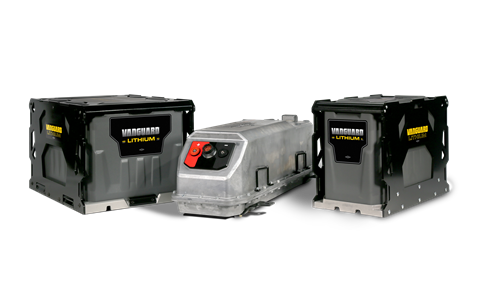 Briggs & Stratton lithium ion batteries. Photo: Briggs & Stratton
Briggs & Stratton lithium ion batteries. Photo: Briggs & Stratton
Schulenberg says that Briggs & Stratton produces Nickel Manganese Cobalt Oxide (NMC) batteries from 3.8 to 10kWh which can be stacked in parallel up to 100kWh.
The company is currently focussing on selling these to OEMs and rental companies specialising in the powered access industry.
And powered access manufacturers have been incorporating li-ion batteries in their machines. In 2018, JCB Access introduced five electric scissor lifts offering working heights between 6.6 meters and 10.1m powered by li-ion batteries.
Last year JLG launched its DaVinci AE1932, a 5.8m electric scissor lift powered by a single li-ion battery. In July 2021, Snorkel announced it had started full production on five li-ion battery powered compact rough terrain scissor lift models.
Manufacturers agree that li-ion batteries have a higher energy density than the lead-acid batteries which have commonly powered most light-use self-propelled access equipment for the past fifty years and are a feature of most petrol cars. This means that they can provide more power and their lifespan is longer.
For Schulenberg, the advantages of li-ion batteries are obvious. They require much less maintenance than their lead-acid equivalents. They can be partially charged and re-charged without damaging the cells and they can work at sub-freezing temperatures.
Battery Management Systems - the brains of the battery
Moreover, unlike lead-acid batteries, they usually come with an electronic battery management system (BMS) which manages the battery so that the lithium cells within the pack do not over-charge or over-discharge to maintain safety and extend the life of the battery.
“The BMS is for all intents and purposes the brains of the battery,” Schulenberg says. “It allows for battery usage monitoring, accommodates safety systems, it also allows for data gathering and extraction so that the equipment owner has greater knowledge about how the equipment is used.
“For any rental fleet, data is important, and our lithium-Ion battery system allows for a standardized platform for extracting data, simplifying and streamlining decision making for fleet managers. Lead acid batteries typically do not incorporate a BMS.”
However, manufacturers agree that li-ion batteries come with a number of drawbacks too.
Li-ion batteries use organic liquid electrolytes which are volatile and flammable when operating at high temperatures.
This means that the batteries can catch fire if they have been improperly manufactured or damaged, or that the software which operates the battery is not stored properly.
In 2021, car giant General Motors recalled the entire fleet of around 141,000 of its most popular electric car, the Chevrolet Bolt after the company identified defects that could lead to battery materials to make contact with each other and combust spontaneously.
The same year Hyundai had to replace the batteries in around 90,000 of its Kona EVs after alleged issues with faulty cells and Ford said it would replace battery packs fitted to the Kuga PHEV after it issued an official recall for the model.
Li-ion battery fire risks
Nonetheless, manufacturers say that combustion risks for li-ion batteries are manageable.
“Our lithium-Ion batteries are designed with added layers of safety,” says Schulenberg.
“The BMS controls the charge and discharge rates to ensure compliance at all times. The use of cylindrical cells together with wire bonding technology enables the battery to self-isolate individual cells if there is any damage or failure. This prevents any mass failing of the battery reducing the risk of thermal events.”
The high cost of li-ion batteries too, when compared with their lead-acid alternative, is also seen as a drawback.
“As with all new technologies, it takes time to be adopted,” Schulenberg says. “Look at the EV market; while it is gaining momentum, it is still not the majority despite all the promoted benefits.
“Lithium-Ion batteries are also more expensive than lead acid – so upfront costs will be higher, but over the life of the equipment the TCO, data extraction benefits and the longer operating life will offset the upfront costs.”
One of the key reasons for the high price of these new batteries is the expense and difficulty in obtaining the rare metals from which they are made.
 Mining for cobalt near Kolwezi, Democratic Republic of the Congo. Photo: Reuters
Mining for cobalt near Kolwezi, Democratic Republic of the Congo. Photo: Reuters
Getting hold of the cobalt needed to make up NMC batteries can be both expensive and potentially damaging to both the environment and human rights.
Around two thirds of the world’s cobalt supplies come from mines in the Democratic Republic of Congo where human rights groups have for years been raising the alarm about dangerous working conditions, environmental abuses, corruption, and the use of child labour.
When asked where it sources the cobalt for its batteries, Briggs & Stratton says that it “sources cells from tier one suppliers.” However, as the complex supply chains surrounding cobalt mining come under further scrutiny, many NMC battery manufacturers and users are coming under pressure to go further.
In 2020, electric car giant Tesla signed a deal with Swiss mining company Glencore to only buy cobalt from the DRC which it could ensure is “conflict free” and does not benefit armed groups in the country.
The company added that it was looking to reduce the amount of cobalt needed in its battery cells. General Motors too has announced plans to use less cobalt in the battery systems of its electric vehicles.
Mining for nickel too, another key component of NMC batteries, has been linked with environmental and health damage, especially in parts of remote Indonesia where many of the world’s nickel reserves are found.
And, although lithium itself is not scarce, the process of extracting it from its ore usually requires large amounts of energy which again can be damaging to the environment.
As manufacturers continue to search for improved power sources, many suppliers are recommending lithium iron phosphate (LFP or LiFePO4) cells – a slightly different type of lithium battery gaining recognition in the manufacturing industries due to its cost-effective materials and stability with high temperatures.
LFP cells are easier to manufacture
LFP cells, which use lithium iron phosphate as the cathode material and a graphite carbon electrode with a metallic backing as the anode, contain neither nickel nor cobalt, making them easier to manufacture.
Proponents argue that, if widely adopted by EV manufacturers, the chemistry could prevent a materials input crunch which has been feared if nickel-cobalt chemistries prevail.
The technology is already widely used in Chinese electric vehicles and has been adopted by a number of global access manufacturers.
In 2018 Manitou launched the MHT-790E, an electric telehandler powered by a LFP battery and in 2019 Genie announced it was offering lithium iron phosphate batteries on its slab scissor range.
“I would definitely recommend LFP batteries in access equipment,” says Denys. “LFP is a much safer technology than NMC (Lithium Nickel Manganese Cobalt Oxide). For the access industry, a huge benefit of LFP technology is that they are fully maintenance-free.
“The batteries are fully resistant to intermediate or opportunity charging, and the charging time is much faster compared to lead batteries.”
Derek Pettingale, director for product & program management‑lithium at Canada-headquartered battery manufacturer Discover, says he recommends LFP for access equipment too.
“For the access industry, LFP lithium batteries enable the highest level of productivity from semi-traction battery powered machines and utility electric vehicles and, unlike lead-acid batteries, can be continuously operated in a partial state of charge (PSOC) without degrading performance,” he says.
“Unlike lead-acid batteries, LFP batteries deliver a dramatic reduction in total cost of ownership and a predictable return on investment.”
Total cost of ownership (TCO) is a phrase often used by lithium battery manufacturers and suppliers as they attempt to encourage buyers to upgrade.
Pettingale estimates that the upfront costs of the LFP cells his firm supplies to the access industry stands at around double those of their lead acid equivalent. However, he says that the total cost of ownership for users is much lower because the average lifespan is much longer.
In fact they have a greater number of cycle charges than li-ion batteries (roughly 2,500 compared with around 1,500 for most li-ion cells if properly charged and discharged). “Lithium costs will come down over time as it becomes more common in the access industry, and we anticipate an increase in demand in the near future,” he says.
DC’s James agrees. “Lead acid batteries tend to cost around a third of the price of LFP cells. However, the industry is realising that LFP cells only need 50% of the capacity of lead acid, so the overall cost is much less,” he says.
High up-front costs and a lack of awareness of the new technology are also putting off potential end user customers, says Denys. “LFP battery technology is a relatively young technology in the access industry.”
“Compared with other market segments such as marine, AGVs (autonomous guided vehicles), cleaning equipment and material handling, the sales solutions in the aftermarket – where a lithium battery is offered as a replacement for a lead acid battery bank is relatively low,” he says.
Moreover, critics point out that the fact that LFP batteries contain cheaper materials than NMC batteries, makes them even harder to recycle at the end of their lives.
Currently, if battery packs are recycled, they tend to be either dissolved in acid or burnt at high temperatures so that the expensive cobalt and nickel can be extracted and re-sold.
For recycling companies, there is currently little value in recycling LFP packs down to their constituent metals through a costly process when manufacturers can buy those same metals more cheaply and easily from mines.
And, despite the push towards lithium, battery manufacturers are continuing to invest in developing lead acid cells which they point out are cheaper than lithium cells and easier to recycle.
Lead-acid still has potential
Last year Discover Battery launched a new range of dry cell absorbent glass mat (AGM) lead acid batteries designed specifically for the powered access industry which it says offers 15% more capacity than standard AGM maintenance free batteries and is suitable for all types of scissor and boom lift platforms regardless of size.
The company last year agreed a deal with Chinese powered access manufacturer Sinoboom to provide its batteries as standard on all of Sinoboom’s electric and hybrid powered work platforms in Europe, North America and Australia as well as Asia which it already supplied.
US Battery too last year updated its deep cycle lead acid AGM line to include thick positive alloy grids to resist corrosion, high density positive active material and advanced glass mat separators which it says will maintain battery cell structure during deep cycling, limit acid stratification and inhibit internal shocks.
“The technology of lead-acid battery packs still has a very interesting potential for development,” says Mikael Cugnet, battery expert at CEA Tech which has been working with Haulotte to assess and develop its future power supply offering.
“When integrated to high-performance electrical architectures, it offers many advantages and still has a bright future, especially given that nearly 98% of lead-acid batteries are recycled across the world, because the components can easily be recovered and reused and have a strong residual value.”
New generation lithium-ion batteries: With actual materials and cell designs, li-ion technology is expected to reach an energy limit in the next coming years. However, scientists have been busy discovering new families of disruptive active materials to unlock present limits. These innovative compounds can store more lithium in positive and negative electrodes and will allow for the first time to combine energy and power.
In addition, with these new compounds, the scarcity and criticality of raw materials are also taken into account. A number of battery manufacturers claimed last year to have produced a cobalt-free Li-ion battery. Chinese battery-cell manufacturer SVOLT unveiled a nickel manganese (NMX) battery pack which it said was in series production in Jiantan, China and could be made at its planned plant in Saarland, Germany by the end of 2023.
Lithium sulphur (Li-S): In li-ion batteries, the lithium ions are stored in active materials acting as stable host structures during charge and discharge. In lithium-sulphur batteries, there are no host structures. While discharging, the lithium anode is consumed and sulphur transformed into a variety of chemical compounds; during charging, the reverse process takes place.
Solid state: A form of battery which replaces the liquid electrolyte by a solid compound which nevertheless allows lithium ions to migrate within it. This makes the technology far safer at both a cell and battery level and means that batteries can contain higher voltage, higher capacity materials, meaning higher energy density and lighter batteries.
Startup companies including Factorial Energy, Solid Power and QuantumScape are already working on the technology. However, the timetable for mass production keeps slipping and it is not clear how soon these batteries will become commercially available.
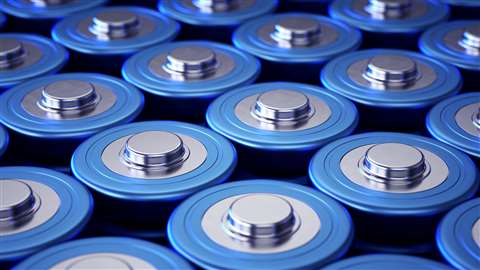 Lithium batteries. Photo: Adboe Stock
Lithium batteries. Photo: Adboe Stock
Zinc air: A potential alternative to lithium. Zinc air batteries using oxygen from the air as their anode and a cathode of zinc have been used for many years in devices such as hearing aids, film cameras and railway signal devices.
Due to the global abundance of zinc, these batteries are much cheaper to produce than lithium-ion ones and they can store more energy (theoretically five times more than lithium-ion batteries). However, their widespread use has been hindered by the fact that recharging them has proved difficult. In 2017, scientists from Sidney University published potential ways to overcome this problem but mass production still seems a long way off.
Sodium: Batteries which use sodium as their primary element rather than lithium have been used since the 1970s and some saltwater batteries are commercially available today. They do not contain costly lithium, nickel or cobalt and are more easily recycled than batteries which use toxic or flammable materials. However, challenges in manufacturing costs mean that these form of batteries are not advancing as quickly as some alternatives and they have a low energy density.
Carbon: With demand for the raw materials needed for batteries skyrocketing, Robial, a company founded in 2018 by academics from the University of the West of England, has been using funding provided by the Bill and Melinda Gates Foundation to use microbial fuel cells that feed off organic carbon found in urine and wastewater to provide electricity.
The cells are designed to provide affordable, renewable and carbon neutral energy for poor or remote areas but, if they ever go into commercial production, also have wider implications.
POWER SOURCING GUIDE
The trusted reference and buyer’s guide for 83 years
The original “desktop search engine,” guiding nearly 10,000 users in more than 90 countries it is the primary reference for specifications and details on all the components that go into engine systems.
Visit Now
STAY CONNECTED




Receive the information you need when you need it through our world-leading magazines, newsletters and daily briefings.
CONNECT WITH THE TEAM










